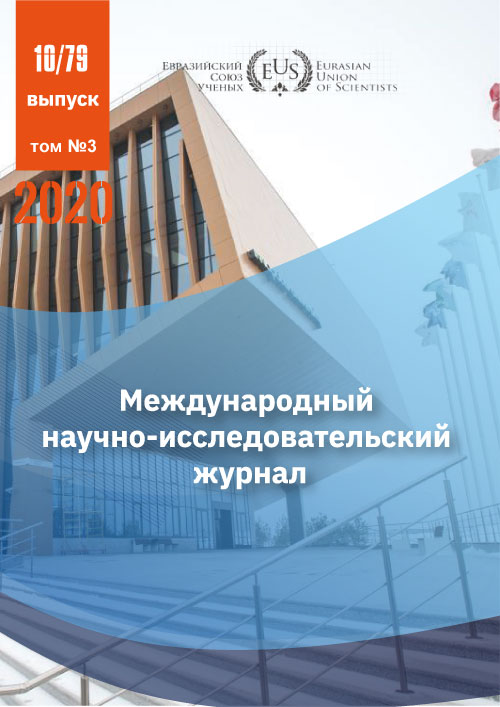DISTRIBUTION OF PSYCHOPATHIC FEATURES IN SOCIETY
Abstract
This article is the third and last in a series of our articles on psychopathy. The introduction emphasizes the importance of identifying and classifying preclinical stages of psychopathy. All discussion is conducted within the framework of an expert approach to the diagnosis of psychopathy. The second part of the article describes in detail the construction of the distribution curve of psychopathy in society and discusses a number of features of this curve, which is not a probability distribution curve in ordinary statistical practice. The third part of the article is devoted to the causes of the appearance of psychopathy and psychopathic traits among members of society. The fourth part of the article examines the available methods for the correction of psychopathy and psychopathic conditions, primarily in children. The fifth part, at a referential level, examines the relatively recently identified special psychological (psychiatric) state called the Dark Triad. In order to evaluate a person within the framework of this approach, in particular, the presence of psychopathic traits at the preclinical level of their manifestation is necessary. The conclusion considers the significance of the presence in society of people possessing all three features of the Dark Triad, two of them or even one feature.
References
2. Александровский Ю.А. Пограничная психиатрия. М.: РЛС, 2006, 1280 с.
3. Белянин В.П. Основы психолингвистической диагностики. (Модели мира в литературе). М.: Тривола, 2000, 248 с.
4. Дацковский И. Два подхода к диагностике психопатий // Клиническая и медицинская психология: Исследования, обучение, практика. № 4, 2019. [Электронный ресурс] URL: http://medpsy.ru/climp/2019_4_26/article00.php (дата обращения: 03.02.2020).
5. Дацковский И. Тест диагностики детской психопатичности ППЧ-МД // URL: http://medpsy.ru/climp/2020_1_27/article00.php (дата обращения: 18.10.2020).
6. Дружинин В.Н. Варианты жизни. Очерки экзистенциальной психологии. СПб.: "Питер", 2010. - 156 с.
7. Егорова М.С., Ситникова М.А. Темная Триада // Психологические исследования. 2014. Т. 7, № 38. С. 12. URL: http://psystudy.ru/index.php/num/2014v7n38/1071egorova38.html (дата обращения: 18.11.2019).
8. Иванец Н.Н., Тюльпин Ю.Г. и др. Психиатрия и наркология: учебник – М.: ГАОЭТАР – Медиа, 2006, 832 с.
9. Кербиков О.В. К учению о динамике психопатий // Проблемы судебной психиатрии (Пограничные состояния), Сборник 19, Научн. труды под ред. Г.В. Морозова. М.: 1961, с. 5-32.
10. Кербиков О.В. Клиническая динамика психопатий и неврозов (1962) // в кн. Избранные труды. М.: 1971, с. 188-206.
11. Кил К.А. Психопаты. Достоверный рассказ о людях без жалости, без совести, без раскаяния. М.: Центрполиграф, 2015 – 360 с.
12. Краснушкин Е.К. Избранные труды. М.: 1960, 608 с.
13. Личко А.Е. Типы акцентуаций характера и психопатий у подростков. – М.: ИОИ, 2016 – 336 с.
14. Макаров И.В. (ред.) Психиатрия детского возраста. Руководство для врачей. СПб.: Наука и техника, 2019 – 992 с.
15. Морева Ю.В. Классификация нарушений развития в детском возрасте, 2017. URL: https://nsportal.ru/vuz/psikhologicheskienauki/library/2017/11/26/klassifikatsiya-narusheniyrazvitiya-v-detskom (дата обращения 30.10.2019).
16. Печерникова Т.П. Паранойяльные состояния в динамике психопатий // Журнал неврологии и психиатрии, 1979, вып. 11, с. 1578-1582. 17. Уилсон Э.О. О природе человека. М.: Кучково поле, 2015, 352 с.
18. Фелинская Н.И. О понятии и классификации пограничных состояний // Проблемы судебной психиатрии (Пограничные состояния), Сборник 19, Научн. труды под ред. Г.В. Морозова. М.: 1970, с. 19-35.
19. Хаэр Р. Лишенные совести. Пугающий мир психопатов. Вильямс, 2007.
20. Шевченко Ю.С. (ред.) Детская и подростковая психиатрия: Клинические лекции для профессионалов / Под ред. Ю.С. Шевченко – 2-е изд., испр. и доп. – М.: МИА, 2017 – 1124 с.
21. Эфраимсон В.П. Генетика гениальности М.: Тайдекс Ко, 2002. — 376 с.
CC BY-ND
A work licensed in this way allows the following:
1. The freedom to use and perform the work: The licensee must be allowed to make any use, private or public, of the work.
2. The freedom to study the work and apply the information: The licensee must be allowed to examine the work and to use the knowledge gained from the work in any way. The license may not, for example, restrict "reverse engineering."
2. The freedom to redistribute copies: Copies may be sold, swapped or given away for free, in the same form as the original.







